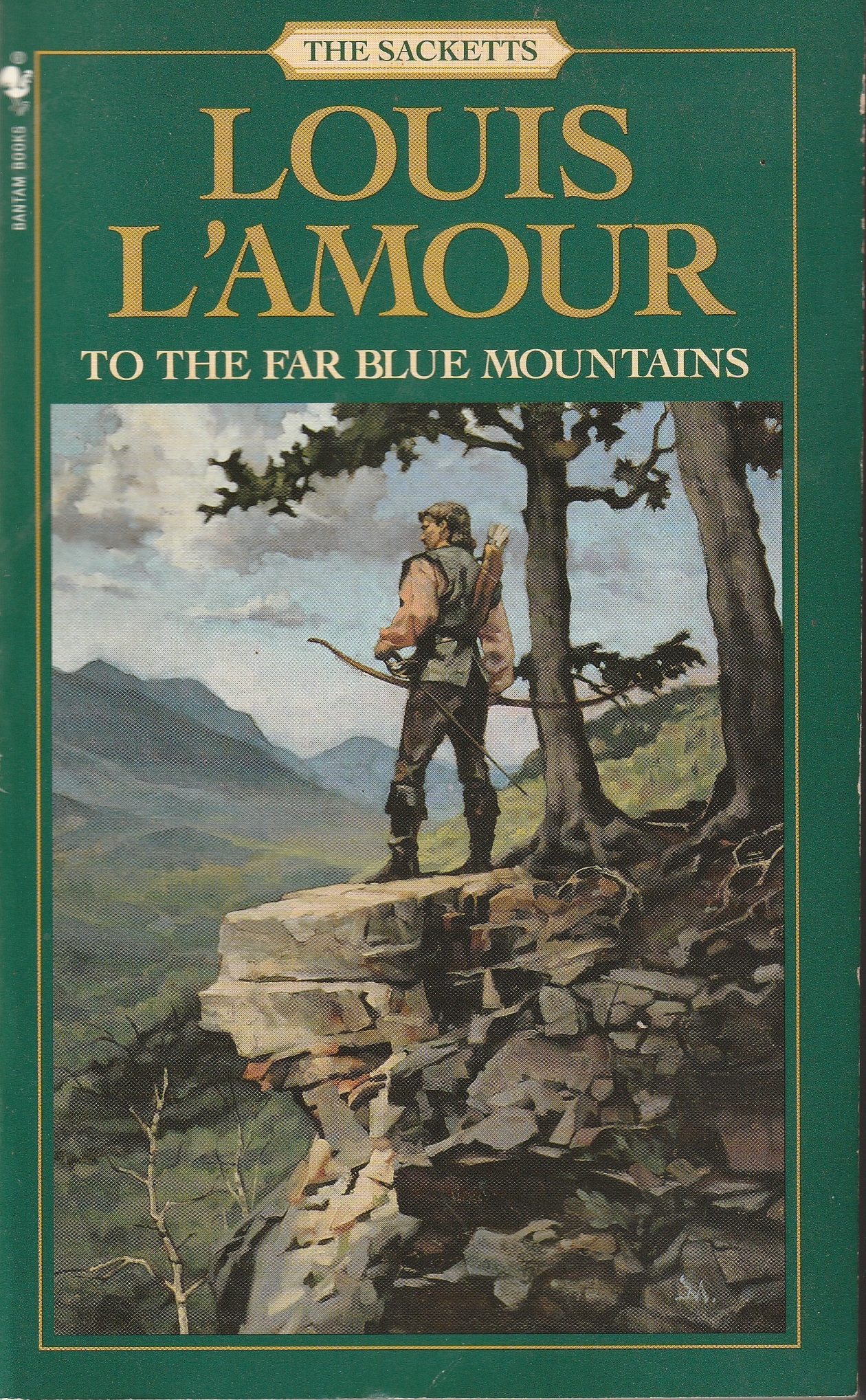 I have a near love-hate relationship with Louis L’Amour. I took a sledge hammer to his historical novel The Walking Drum a few years back after a re-read. On the other hand, I like his pulp adventures featuring Turk Madden and Ponga Jim Mayo. I find L’Amour works better in slender paperbacks from the 1960s- Last Stand at Papago Wells, Shalako, and Catlow over later sprawling books like Fair Blows the Wind.
I have a near love-hate relationship with Louis L’Amour. I took a sledge hammer to his historical novel The Walking Drum a few years back after a re-read. On the other hand, I like his pulp adventures featuring Turk Madden and Ponga Jim Mayo. I find L’Amour works better in slender paperbacks from the 1960s- Last Stand at Papago Wells, Shalako, and Catlow over later sprawling books like Fair Blows the Wind.
I liked the first Sackett novel to be published, The Daybreakers when I read it some years back. L’Amour turned the Sackett family saga into an historical series in the 1970s beginning with Sackett’s Land in 1974 with a turn of the seventeenth century setting. It must have been a trend as the historical Sackett novels started the same year as the recently deceased John Jakes’ Kent Family Chronicles. I read Sackett’s Land around 15 years ago noting some of the problems I saw with The Walking Drum had diminished.
The following novel, To the Far Blue Mountains was first published in 1976 in hardback, and in paperback the next year. The novel picks up with Barnabas Sackett back in England preparing a ship with colonists. There is a price on his head as there is a story he discovered a lost treasure of King John. The Crown wants that gold. Barnabas Sackett is imprisoned, escapes, travels across England to Wales, takes ship to Iceland, and then to Newfoundland. He becomes involved with piracy along the way with some conflict with his enemy from Sackett’s Land, Capt. Nicholas Bardle.
The ship carrying Sackett’s beloved and others who joined in Sackett’s venture was wrecked but the survivors hanging on. Sackett rallies them to build a stockade, clear land, engage in farming and hunting. The little settlement makes friends with some Indians and fights others. A group of mutineers turn pirate and becomes Sackett’s new enemy. Strangely, there is no resolution of the feud with Bardle.
Sackett’s colony is able to help out the struggling Jamestown colony endearing him to the governor. In return, Sackett’s holding are made legitimate. L’Amour has lots of hunting including the now extinct Eastern Woodland Buffalo. I notice L’Amour has little swordplay and never mentions the guns are matchlocks.
Decades go by and Barnabas Sackett comes to an end in a fight with Indians. The story is told in first person and it is odd that it ends. People make fun of H. P. Lovecraft having his narrator writing in his journal as the extra-dimensional creature is coming down the hall. This is worse.
I have known people who are ardent L’Amour fans. I knew one guy who refused to read anyone but L’Amour. I personally prefer Gordon D. Shirreffs and T. V. Olsen’s hard-boiled westerns. L’Amour can be good when hitting all cylinders which was generally in the 60s. I think a part of his appeal is he melded the mythic western with the historical western. David Gemell had mentioned Robert E. Howard and Louis L’Amour as his two biggest influences.
Bantam Books had new covers twenty years ago by Greg Manchess. To the Far Blue Mountains has a nice cover. The sequel, The Warrior’s Path which concerns Barnabas Sackett’s son is in my to-be-read pile.
Please give us your valuable comment